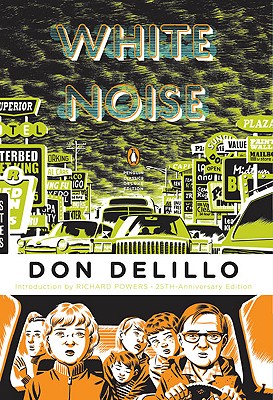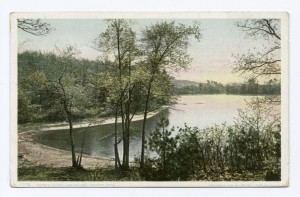 Years ago, I quarreled with my college writing teacher because he wanted me to spend my summer in writing workshops and conferences, and instead I worked on a small Chesapeake island, mucking about in mud and boats. He thought I was wasting my time, but my heroes were writers like Henry David Thoreau and Aldo Leopold, and like them, I wanted to live outdoors and see the world in order to one day have something to write about. I didn’t know it then, but my argument with my professor was part of a long tradition of animosity between literary writers and those who are often dubbed “nature writers.”
Years ago, I quarreled with my college writing teacher because he wanted me to spend my summer in writing workshops and conferences, and instead I worked on a small Chesapeake island, mucking about in mud and boats. He thought I was wasting my time, but my heroes were writers like Henry David Thoreau and Aldo Leopold, and like them, I wanted to live outdoors and see the world in order to one day have something to write about. I didn’t know it then, but my argument with my professor was part of a long tradition of animosity between literary writers and those who are often dubbed “nature writers.”
To quote Jason Cowley in his introduction to Granta’s 2008 Nature issue, nature writers are frequently stereotyped as “bearded, badly dressed, ascetic, misanthropic . . . often alone on the blasted moor . . . seeking meaning and purpose through a larger communion with nature.” Like most stereotypes, this perception grows from a seed of truth, planted by nature writers themselves, like Thoreau, who asked, “What is a course of history, or philosophy, or poetry, no matter how well selected . . . compared with the discipline of looking always at what is to be seen?” What his question belies is that as a nature writer, Thoreau was simultaneously torn between needing to be outside, in the world, and feeling compelled to write (and, like all writers, thus also compelled to read). Much of his ability to observe and love the world came through his discipline of writing.
However, instead of acting as emissaries between the woods and the classrooms, nature writers often seem to be picking a fight with academia, inviting discord, much like Aldo Leopold, the author of A Sand County Almanac, did when he observed that, “[he] once knew an educated lady, banded by Phi Beta Kappa, who told [him] that she had never heard or seen the geese that twice a year proclaim the revolving seasons to her well-insulated roof. Is education possibly a process of trading awareness for things of lesser worth?” As a way to encourage direct experience, Leopold disparaged academics, and so it is no wonder then that academics in turn often portray nature writers as naïve wanderers, and further use this fact to reinforce the idea that institutional education is superior to a Gnostic experience of the world.
This bias against nature writers as too tanned to be serious, living alone in the woods, waxing eloquent about the beauty of a skylark, is so prevalent that even the leading nature journals appear to be distancing themselves from their forefathers. Ecotone, an environmental literary journal out of UNC Wilmington, defines its mission, in part, by distinguishing their aesthetic from “the hushed tones and clichés of much of so-called nature writing.” Likewise, Flyway, published by Iowa State’s MFA in Creative Writing and Environment, clarifies that their notion of nature writing does not mean “simply lovely meandering poetry about the beauty of a field of wheat or a sunset.”
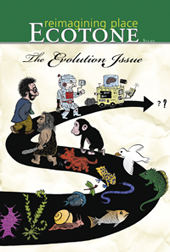 At first glance, these journals seem to be siding with my college professor, separating themselves from work whose primary purpose might seem to be exalting nature. Yet David Gessner, Ecotone’s own editor, uses decidedly pastoral language in an “Editor’s Note,” observing this about one of his walks: “Swifts carved the sky overhead. I stared at the nearly fluorescent lichen that glowed on the rocks hanging above me, stopped to splash my face with the cold creek water, crushed sage like smelling salts, and inhaled an odor that reminded me this was a whole new place.” These lines seem to be the very essence of traditional nature writing. Consider the similarity between Gessner’s lines and these, which are from Thoreau: “Sympathy with the fluttering alder and poplar leaves almost takes away my breath; yet, like the lake, my serenity is rippled but not ruffled.” Here is the quintessential language of the nature writers, authors who are unabashed at being moved by the natural world, who go onto the blasted moor and then tell us about their trip. This sort of prose can be found in all of today’s nature journals, despite the fact that they seem to be decrying pastoral writing in their mission statements. Yet rather than see this as hypocritical or disingenuous, or as a faux distancing from the roots of nature writing, we should see it for what it truly is: practical. More specifically, it is a way to slim out the slush pile, to discourage sentimental, poorly written descriptions lacking substance or meaning.
At first glance, these journals seem to be siding with my college professor, separating themselves from work whose primary purpose might seem to be exalting nature. Yet David Gessner, Ecotone’s own editor, uses decidedly pastoral language in an “Editor’s Note,” observing this about one of his walks: “Swifts carved the sky overhead. I stared at the nearly fluorescent lichen that glowed on the rocks hanging above me, stopped to splash my face with the cold creek water, crushed sage like smelling salts, and inhaled an odor that reminded me this was a whole new place.” These lines seem to be the very essence of traditional nature writing. Consider the similarity between Gessner’s lines and these, which are from Thoreau: “Sympathy with the fluttering alder and poplar leaves almost takes away my breath; yet, like the lake, my serenity is rippled but not ruffled.” Here is the quintessential language of the nature writers, authors who are unabashed at being moved by the natural world, who go onto the blasted moor and then tell us about their trip. This sort of prose can be found in all of today’s nature journals, despite the fact that they seem to be decrying pastoral writing in their mission statements. Yet rather than see this as hypocritical or disingenuous, or as a faux distancing from the roots of nature writing, we should see it for what it truly is: practical. More specifically, it is a way to slim out the slush pile, to discourage sentimental, poorly written descriptions lacking substance or meaning.
Like Thoreau, Gessner writes detailed, lean prose, using the proper names and descriptions for things. His decision to name the swift and the sage, just as Thoreau names the species of the trees, is an important one. It matters because the difference between good and bad writing is the difference between precision and abstraction, between evocative nouns with power and ones that are mere placeholders, between weak adjectives and ones that are concrete and precise. In their dismissal of hushed tones and clichés, today’s nature journals are trying to tell both their contributors and their readers that they only publish the best. If you are going to write about a sunset, you must write about it well, with specificity, tension, thought and reason. And if you are going to write about a walk, you must use details to fix your reader in place, and to set a foundation for metaphor and philosophy. For today’s nature journals writing about place or the environment is not enough—it’s simply a place to begin.
Beyond thinning poor prose out the of slush pile, the nature journals’ mission statement disclaimers also make a thrilling declaration, by stating, unequivocally, that we all live somewhere, and that where we live shapes us. In her Editor’s Note, Flyway’s Sara Perez defines “environment” as “the places where we make our lives, and the ways in which these spaces themselves change, impact us irreversibly. All work is written from a someplace.” The environmental writing that nature journals now call for is not just writing of wild places, but also of our cities and towns.
 Similarly, the contents of the January/February 2010 issue of Orion, whose byline is “Nature/Culture/Place,” include the following: “Spectral Edge,” an essay about the intersection of the old and new west and the tenuous relationship between men and bears; “Conjoined Fate,” about a scientific illustrator who paints leaf bugs deformed by nuclear radiation; “Dubai,” a picture essay of the Arab emirate captured with phone cameras; and “Tending the Garden of Technology,” an interview with Kevin Kelly, the founder of Wired magazine. With this array of essays, it is clear that Orion recognizes that men are part of nature. We are biological creatures tied to this earth, and so our cities, suburbs, farms, computers, and strip malls are as much a part of this world as a sparrow’s nest, and warrant just as much attention by the nature writer.
Similarly, the contents of the January/February 2010 issue of Orion, whose byline is “Nature/Culture/Place,” include the following: “Spectral Edge,” an essay about the intersection of the old and new west and the tenuous relationship between men and bears; “Conjoined Fate,” about a scientific illustrator who paints leaf bugs deformed by nuclear radiation; “Dubai,” a picture essay of the Arab emirate captured with phone cameras; and “Tending the Garden of Technology,” an interview with Kevin Kelly, the founder of Wired magazine. With this array of essays, it is clear that Orion recognizes that men are part of nature. We are biological creatures tied to this earth, and so our cities, suburbs, farms, computers, and strip malls are as much a part of this world as a sparrow’s nest, and warrant just as much attention by the nature writer.
Some cynics argue that these journals risk diluting or undermining what makes them unique by widening their definition of “place” and “environment.” And, in particular, that they are broadening what they publish not to push the boundaries of how we see the world but simply in order to escape the pigeonhole of “nature journal,” thereby selling more copies. Yet to divide the world between man and nature is a false, archaic distinction. We are biological creatures as dependent on food, soil, and air as any creature, and separating ourselves, and the environments we create, from the natural world is a false perception that is arguably the foundation of so much of the environmental devastation that mankind has wrought upon the earth.
As a child growing up in Columbia, a planned suburban Maryland city, I learned to pay attention to the world by reading Thoreau and Leopold, and thus found the wild within the tamed. Just as Gessner writes about walking along the Charles River, “the snooty and sooty corridor of nature,” I spent my childhood hiking the creeks that wound their way through town, sheltered by a barrier of woods and fields. I caught crayfish with my hands, spotted red fox and whitetail deer. I lived outside, my feet walking on earth and in water, my skin browned by the sun, my lungs breathing unconditioned air, and in this way, my young life was little different than if I was growing up in the rural wilds of my dreams. I discovered that, as artificial as my suburb seemed, it was, like me, part of the world.
The very fact that my beloved childhood woods were in the midst of suburbia speaks to the need and prevalence of this new form of nature writing. While many nature writers may have fallen in love with the world during a sojourn in the wild, mankind has left its imprint everywhere. You cannot be a nature writer without writing about environmental destruction and change, and you cannot ignore the places people live because these environments shape our bodies, minds, and spirits. Even though the Orion photo essay “Dubai” portrays interior landscapes, the pictures are as much photographs of environment as the finest Ansel Adams print, and are as fully realized and vital to understand as Thoreau’s pond. In today’s nature journals, place is primary, and whether that place be wild or urban makes little difference.
As the Orion interview with Kevin Kelly, the founder of Wired magazine, reminds us, we are a culture increasingly shaped not just by urban environments, but by a cyber-reality. Kids growing up on my old street are having a different childhood than I remember. While the woods and creeks are still there, I never see any children in them. And although it is vital to have authors like Wendell Berry making the argument to shun computers, it is too simplistic to paint technology as evil. We created technology, and now it is shaping us—we cannot ignore that.
More than any other writer, the nature writer needs to pay attention to technology and the ways it changes us, because it is the nature writer’s job to write about environment, in all of its manifestations, including the cyber environment. Kelley sees technology as a way of being more in touch, and considers himself a “techno transcendentalist,” arguing that through technology we are “connecting to a state of awareness, of living, of being, that transcends our day-to-day life. It’s not a withdrawal, it’s an emergence.” I’m not convinced by his argument, but I’m glad that it’s in Orion, because it is vital that his point of view joins the conversation of the effect of place and environment on our lives.
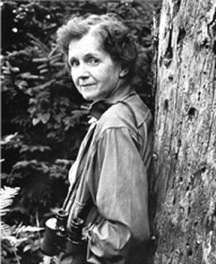
Rachel Carson
This opening up of nature writing to include all environments, while very much contemporary and exciting, is not entirely new. Fourth River, an environmental journal out of Chatham University, quotes their “most distinguished alum,” Rachel Carson, in saying that “if we are true to the spirit of John Burroughs, or of Jeffries or Hudson or Thoreau, we are not imitators of them . . . we are the creators of a new type of literature as representative of our own day as was their own.” What I think Carson understood, and what I think all the editors of these journals understand, is that writing about the ways that man, culture, and nature intersect is exactly what the old nature writers did—they were just writing of a different time. Thoreau lived within easy walking distance from Concord, and he enjoyed the companionship of society. Much of Walden is filled with his interactions with friends and neighbors, and recounts his time on farms and in town. Walden is the account of a man living consciously in the world, not the wild. Thoreau required “of every writer, first or last, a simple and sincere account of his own life,” and that is very much in keeping with the nature journals of today, who look for an account of life and place, not just in romanticized woods, but for the ways each one of us daily experiences the world.
Sartre writes that, “there is really no love other than one which manifests itself in a person’s being in love.” Since leaving my childhood suburban home, I have paddled the northern coast of France, backpacked through the Rockies, and navigated the swamps of Louisiana, but for me, no place matches the Chesapeake. I love the osprey and bald eagles that hunt its waters, and the otters and beavers that rule the upper freshwater creeks. I love eating the flesh of the blue crab and savor the slurp of a Chesapeake oyster. But the main, true reason that I love the Chesapeake, and find it more beautiful than any other place, is that I chose it, just as it seemed to choose me. I choose to love the Bay by paying attention to her and learning her names. Had I chosen to love the mountains, or the prairies, or the suburban and urban streets, my stories would have been love songs for those places, and I still would have been a nature writer.
Because of the bias inherent in love, nature writing often walks the delicate line between literature and persuasion, essay and propaganda, which I think is another reason for the misunderstanding between nature and literary writers. As Rick Bass writes in an Orion essay about Wallace Stegner, “we do what we do—spend our long hours writing or teaching or working—to preserve or create that which we find beautiful.” Unlike literary writers, nature writers have a mission statement. The nature writer hopes to create love in his reader, and thus spur them to also love the world. But really, isn’t every writer driven by the need to write about the world they both love and hate? None of us are unbiased observers of the world, because if we were, we wouldn’t care enough to write. Some writers are driven by a love of people and characters, others by the “what ifs” of human behavior and narrative, and nature writers are compelled to write about place. Ultimately, while some nature writers might ask the reader to take action, to preserve some fragment of habitat or to change their diets or driving habits, for most, like all writers, their loyalty is to the world they are creating on the page, and the great writer trusts that if they do their job well, and describe their love truly, they will engender love in the readers, who will then be compelled to action or change.
Beyond the ever-widening view of what constitutes environment, today’s nature journals are also revolutionizing the old genre boundaries of fiction vs. non-fiction. Nature writing, according to the old definition of the term, refers to non-fiction, like Walden or A Sand County Almanac. These are books that engage directly with their natural subject matter, and in today’s nature journals there are plenty of essays doing just that. However, for me, one of the most exciting things about the new ethos of nature writing is their opening of the often arbitrary boundaries dividing fiction, non-fiction and poetry. Ecotone defines their name, and mission, thus:
An ecotone is a transition zone between two adjacent ecological communities, containing the characteristic species of each. It is therefore a place of danger or opportunity, a testing ground. We embrace and celebrate these ecotones by breaking out of the pen of the purely literary and wandering freely among the disciplines.
That is exciting stuff for us fiction writers. But then how do you define environmental, or place-based, fiction? It is easy to mark Rick Bass’s stories as nature writing because his depictions of wild places are so vivid and central to his stories, but there are many more writers working on a gradient of nature writing, like Wallace Stegner or Louise Erdrich.
Perhaps, then, we should use John Gardner’s definition of great fiction as our benchmark. He said that the hallmark of successful writing is the creation of “a vivid, continuous dream.” Such a dream relies on characters, plot, narration and setting. All books must be set somewhere, and all great writers paint these landscapes and worlds so that we believe and trust them, and count on them to be as stable as the world beneath our feet. Anytime a writer creates a vivid setting, and allows that setting to impact and shape his characters, that writer has become a sort of nature writer. This is true not just for the writers of the wild world, but of the man-created places as well. On the second page of Colum McCann’s Let The Great World Spin, the narrator describes the Manhattan morning as such:
Car horns. Garbage trucks. Ferry whistles. The thrum of the subway. The M22 bus pulled in against the sidewalk, raked, sighed down into a pothole. A flying chocolate wrapper touched against a fire hydrant. Taxi doors slammed. Bits of trash sparred in the darkest reaches of the alleyways. Sneakers found their sweetspots. The leather of briefcases rubbed against trouser legs. A few umbrella tips clinked against the pavement. Revolving doors pushed quarters of conversation out into the street.
That description pays close attention to the world, the very hallmark of writing about the environment. Indeed, the degree of attention is strikingly similar to Thoreau’s description of Walden Pond as thus:
As I sit at my window this summer afternoon, hawks are circling about my clearing; the tantivy of wild pigeons, flying by twos and threes athwart my view, or perching restless on the white-pine boughs behind my house, gives a voice to the air; a fishhawk dimples the glassy surface of the pond and brings up a fish; a mink steals out of the marsh before my door and seizes a frog by the shore; the sedge is bending under the weight of the reed-birds flitting hither and thither; and for the last half hour I have heard the rattle of railroad cars, now dying away and then reviving like the beat of a partridge, conveying travelers from Boston to the country.
The same techniques are employed in both passages. Both employ sound and sight, using the sensory detail and precise description that writing instructors everywhere are trying to teach their students. Both write of the noise of a passing train—McCann calling it a thrum, Thoreau comparing it to a partridge. Both use the right names for things, specifying sedges and reed-birds, garbage trucks and chocolate wrappers. They are the same; only their subject matter differs. They are both writing of place – they are both, in their own way, writers of environment.
There is room in nature writing for both man and nature, for fiction and non-fiction. What is required is that we acknowledge our relationship to place. Humans are part of this world, and for good or bad, the things we create are also part of our world, our environments shaping us even as we shape it. What nature writers have always done is to point out that which other people may not notice, or lack knowledge to understand.
My college professor once worried that I was distracting myself from writing by going outside, but it was there that I learned to pay attention. After years of leading kayaking trips and teaching environmental education, I returned inside to write guidebooks and then fiction, thinking I was ending my long detour into the wild, and that my fiction would necessarily be distant and distinct from my nature writing roots. However, what I’ve learned is that nature writing braids itself into all my work, and into the prose of every writer I love, from Steinbeck to Joyce, and even into the prose of my old college professor, who wrote a cattle drive in such a way that I can still taste the dust kicked up from the dry ground, and can smell the animal stink of the herd. Nature writers name the world and make it known.
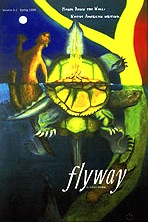 In order to live consciously, we need to know the beauty that lies within us and around us, and in the things we create, and we need to understand the ugliness – the ways we alter and pollute the world – and how that shapes and warps us. We are organic creatures as bound to the earth as any blade of grass – we are of the earth, of our environment, and thus all good writing reflects this connection. It is simply a question of degree and focus. Nature journals today are providing that focus. More importantly, they are showing readers with their broadened scope that nature writers are not turning their backs on the world by heading into the wild, but rather are searching for another way to write the human experience. We cannot love that which we do not know. That is what writing can do. That is what writing needs to do.
In order to live consciously, we need to know the beauty that lies within us and around us, and in the things we create, and we need to understand the ugliness – the ways we alter and pollute the world – and how that shapes and warps us. We are organic creatures as bound to the earth as any blade of grass – we are of the earth, of our environment, and thus all good writing reflects this connection. It is simply a question of degree and focus. Nature journals today are providing that focus. More importantly, they are showing readers with their broadened scope that nature writers are not turning their backs on the world by heading into the wild, but rather are searching for another way to write the human experience. We cannot love that which we do not know. That is what writing can do. That is what writing needs to do.
Further Resources:
- For more about the new breed of nature journals that Andrea Nolan mentions above, click on the following links for: Ecotone, Flyway, Fourth River, and Orion.
- FWR contains dozens of interviews with writers that touch on the root of their settings – both natural and urban. You can read a conversation with Jesmyn Ward on “Getting the South Right,” Colson Whitehead on Sag Harbor, and Preeta Samarasan on her novel of an Indian family in Malaysia, among many, many more.
- Delve further into Andrea Nolan’s knowledge of the Chesapeake in her guide book, Sea Kayaking Virginia. Nolan also has stories forthcoming in Flyway, Dogwood, and Alligator Juniper.
- Finally, be sure to check out The Association for the Study of Literature and Environment. The mission of ASLE is “to promote the understanding of nature and culture for a sustainable world by fostering a community of scholars, teachers, and writers who study the relationships among literature, culture, and the physical environment.” Visit their website for information on membership, programs, writing awards, and teaching resources.

